Artificial realities: copying wild microbial communities in the lab
When we think of the plant microbiota, we tend to think in terms of how they interact with their host. But they also have complex give-and-take relationships with each other.
Microbiomes play host to sitcom dramas at a microscopic scale. Earlham Institute Group Leader Dr Ruben Garrido-Oter is investigating how we can understand these complex and sometimes tempestuous associations.
Like humans, plants rely on complex microbial communities. These are acquired from the environment and have an impact on the plant’s nutrition and health. Thousands of different species of bacteria and fungi make their homes on and inside roots and leaves.
These are the plant microbiota: diverse communities which trade beneficial services in exchange for a cut of the nutrients the plant makes through photosynthesis. They can support plant growth by mobilising nutrients from the environment, as well as providing protection from invading pathogens.
But the inhabitants of these tiny worlds do not just focus their attention on their host. They also interact with each other.
They can grow, trade resources, communicate via secreted chemicals, and sometimes attack each other. They are even capable of exchanging DNA, accelerating the speed at which they adapt to new environmental conditions.
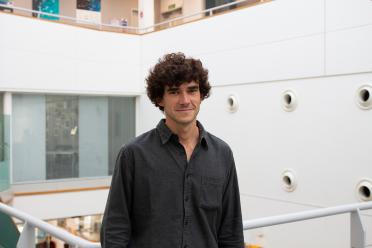
Ruben leads a research group exploring the ecology and evolution of host-associated microbial communities
Dr Ruben Garrido-Oter is studying how these bacterial communities behave and evolve over time by creating communities imitating natural conditions in the lab.
“My goal is to unravel the ecological and genetic principles that could help us predict the behaviour of such complex communities,” says Garrido-Oter. “I‘m particularly interested in microorganisms with photosynthetic hosts, such as plants and algae.
“The microbiota of plants and algae play important roles in natural ecosystems and could be harnessed as a tool to improve agriculture and biotechnology. However, these microbial ecosystems are so complex that their dynamic behaviour is often chaotic and unpredictable – much like the weather.
“By using reductionist experimental systems - where we simplify natural microbial communities in the laboratory - we try to understand the principles by which these systems change over time. We might be able to use this knowledge to predict events such as ecosystem collapse, or even build new stable ecosystems with useful properties from scratch.”
In labs, micro-organisms are usually studied in a pure culture of one strain, often cloned from a single starting cell.
This is extremely useful for filtering out background noise when conducting an in-depth study of a particular organism by characterizing their behaviour under controlled conditions or performing genetic manipulation.
However, it is not the full picture. In the wild, bacteria live in close proximity with other microorganisms, often forming biofilms - clusters of cells sticking to a particular place, such as rocks in a stream, human skin, or the surfaces of plants – with different strains and species of bacteria.
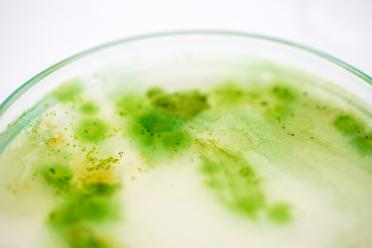
Colony of blue-green algae in culture medium plate.
“In complex communities, micro-organisms interact with one another and this impacts on their behaviour,” explains Garrido-Oter.
“How these associations determine the future composition and functions of the microbial community is a topic of intense research, particularly in the fields of the plant and animal microbiota.”
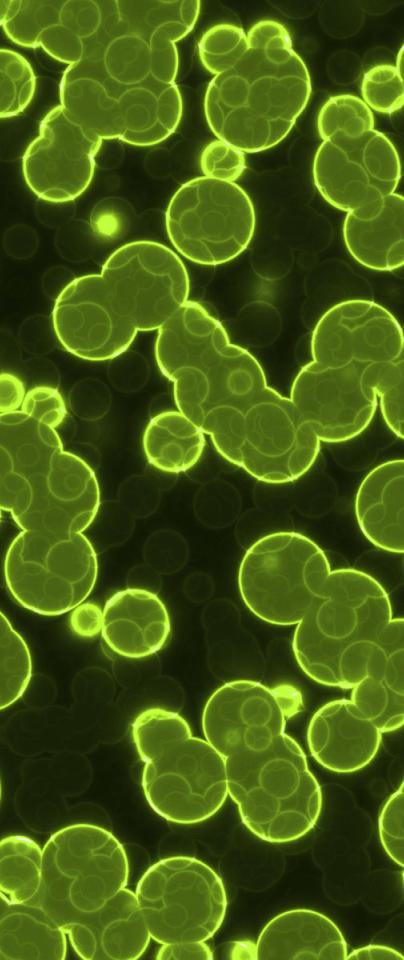

The microbiota of plants and algae play important roles in natural ecosystems and could be harnessed as a tool to improve agriculture and biotechnology.
However, these microbial ecosystems are so complex that their dynamic behaviour is often chaotic and unpredictable – much like the weather.

Dr Garrido-Oter intends to recreate natural communities of microorganisms in the lab to look at the effect different species have on each other.
To do this, he and members of his team collect samples from agricultural and natural sites to start the process. The communities found are observed, characterized and dissected using cutting-edge experimental and computational tools.
From these natural samples, individual microbial species can be isolated, establishing large microbial culture collections.
“I’d estimate we’re currently able to culture about 60 per cent of the organisms we find in a sample from the plant or algae microbiota, so some of the conditions we find in nature remain impossible to recreate,” he cautions. “However, this is still far better than what was thought possible only a few years ago.”
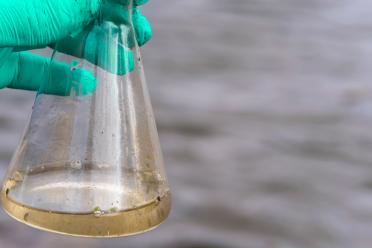
Using natural samples, Dr Garrido-Oter will aim to create microbial communities in the lab imitating natural conditions
These microbial isolates form the building blocks of synthetic communities – so-called ‘SynComs’ – created by Ruben and his group to reconstruct simplified versions of what we find in nature.
“Experimental systems with SynComs are a powerful tool to study the plant microbiota, but there is a trade-off between complexity and tractability,” he explains.
“A tractable community is one that is well characterised and easy to use but that wouldn’t necessarily tell us a lot. A very complex community, closer to natural conditions, could give us a lot of new information but can be very difficult to study.”
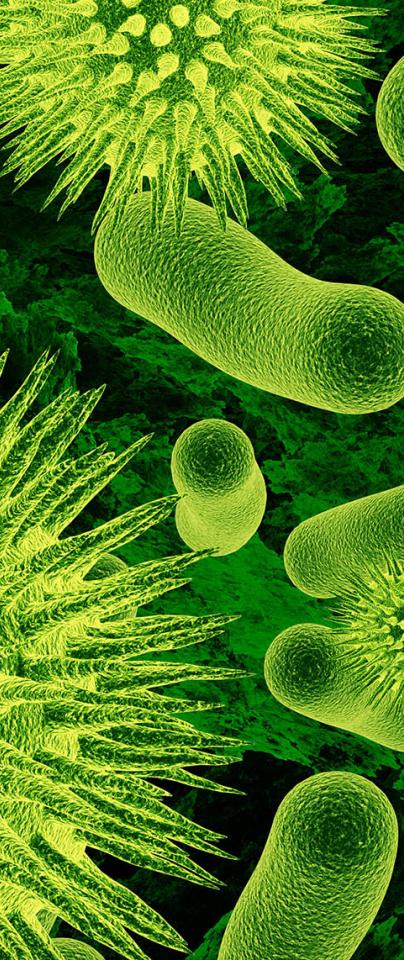

My goal is to unravel the ecological and genetic principles that could help us predict the behaviour of such complex communities, I'm particularly interested in microorganisms with photosynthetic hosts, such as plants and algae.

Dr Garrido-Oter studied computer sciences at the Technical University of Berlin before joining the Max Planck Institute for Plant Breeding Research in 2012, where he stayed beyond his PhD as a group leader.
Recently, his microbiota research awarded him with a prestigious ERC Starting Grant, which will support the development of novel experimental systems and computational methods. Their ultimate goal is to reveal fundamental, quantitative principles governing the dynamics of complex microbial communities.
“The exceptional technology, infrastructure, and research environment at the Earlham Institute will provide the perfect setting in which to continue my work, and the superb plant and microbial research community at the Norwich Research Park will provide opportunities for multi-disciplinary collaborations,” he concludes.
“I’m thrilled to become part of this community.”